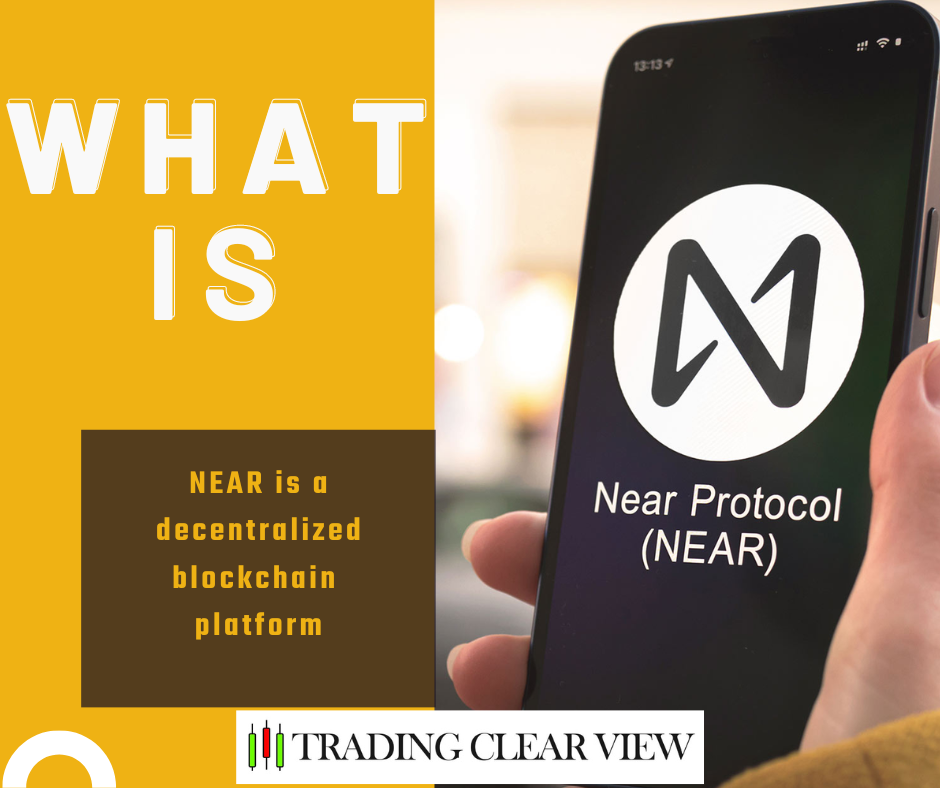What is Near Protocol Blockchain?

NEAR is a decentralized blockchain platform that aims to make it easy for developers to build and deploy decentralized applications (DApps) and smart contracts. The platform is designed to be scalable, secure, and user-friendly, with a focus on usability and accessibility.
NEAR uses a unique consensus mechanism called “Nightshade,” which combines sharding and a variation of proof-of-stake (PoS) consensus to achieve high throughput and low transaction fees. This enables the NEAR network to support a large number of DApps and users, without sacrificing security or decentralization.
NEAR also provides a suite of developer tools and resources, including a software development kit (SDK), a web-based development environment, and a growing ecosystem of third-party tools and services.
Overall, the NEAR blockchain aims to provide a powerful and flexible platform for developers to build the next generation of decentralized applications, with a focus on ease-of-use, scalability, and user experience.
What is Near Coin?
Near is a blockchain-based platform that aims to enable the creation and deployment of decentralized applications (DApps) and smart contracts. NEAR Protocol is the native cryptocurrency of the Near platform. It is used to pay for transaction fees and for staking by validators who secure the network. NEAR is also used as a means of exchange and as a store of value. The Near platform is designed to be user-friendly and to provide high performance and scalability, making it suitable for use in a wide range of applications, including gaming, finance, and social media, among others.
Near Protocol blockchain working style
The NEAR blockchain is a decentralized network that relies on a consensus mechanism called Nightshade to validate transactions and secure the network. Here’s a brief overview of how the NEAR blockchain works:
- Validators: The NEAR blockchain is secured by a set of validators, who are responsible for validating transactions and adding new blocks to the blockchain. Validators are chosen through a staking process, in which they must hold a certain amount of NEAR tokens as collateral and are rewarded with transaction fees and newly minted tokens for their work.
- Sharding: The NEAR blockchain uses a sharding mechanism to divide the network into smaller, parallel chains called “shards”. This allows the network to process more transactions in parallel, without sacrificing security or decentralization.
- Nightshade consensus: Within each shard, the NEAR blockchain uses a consensus mechanism called Nightshade, which combines proof-of-stake (PoS) and threshold cryptography to achieve fast finality and low transaction fees. Validators within each shard vote on transactions using their staked tokens, and the threshold cryptography ensures that only authorized validators can participate in consensus.
- Smart contracts: The NEAR blockchain supports the deployment of smart contracts, which are self-executing programs that can automate the execution of complex transactions and operations. Smart contracts on NEAR are written in Rust, a fast and secure programming language, and can interact with each other and with external data sources.
- Applications: Developers can build decentralized applications (DApps) on top of the NEAR blockchain using a variety of programming languages and tools, including Rust, AssemblyScript, and TypeScript. NEAR provides a suite of developer tools and resources, including a web-based development environment and a software development kit (SDK), to make it easy for developers to build and deploy DApps on the platform.
Overall, the NEAR blockchain is designed to be scalable, secure, and developer-friendly, with a focus on making it easy to build and deploy decentralized applications.
Near Protocol Blockchain feature’s
NEAR Protocol is a blockchain platform designed to support decentralized applications (DApps) and smart contracts. Here are some of the key features of NEAR:
- Scalability: NEAR uses a sharding mechanism that allows the network to process multiple transactions in parallel, improving throughput and reducing latency. This makes it possible for the platform to handle high volumes of transactions and support large-scale DApps.
- Speed: NEAR is designed to achieve fast finality, meaning that once a transaction is confirmed, it cannot be reversed. This helps to improve the user experience for DApps, making it possible to support applications that require near-instantaneous transactions.
- Security: NEAR uses a proof-of-stake (PoS) consensus mechanism, which requires validators to hold a stake in the network in order to validate transactions. This makes it more difficult for bad actors to attack the network and provides greater security for users and applications.
- User-friendly: NEAR is designed to be easy to use and accessible to developers and users of all skill levels. The platform provides a suite of developer tools, including an SDK and web-based development environment, to make it easier for developers to build and deploy DApps on the platform.
- Interoperability: NEAR supports interoperability with other blockchains, making it possible to exchange assets and data between different networks. This makes it easier for developers to build cross-chain applications and for users to access a wider range of services and assets.
Overall, NEAR Protocol is designed to be a flexible, scalable, and user-friendly blockchain platform that supports a wide range of decentralized applications and use cases.




